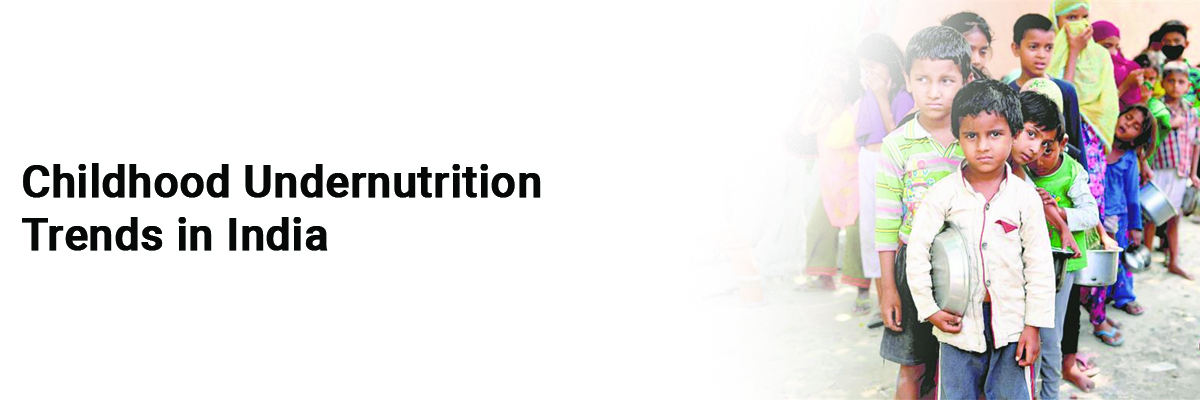
 IJCP Editorial Team
IJCP Editorial Team
Childhood Undernutrition Trends in India
Childhood undernutrition is a significant problem in developing countries, including India, and is a major contributor to child mortality worldwide. Although global efforts have prioritized addressing malnutrition through sustainable development goals (SDGs), progress has been uneven. In India, National Family Health Surveys (NFHS) provide crucial data on various health indicators, including childhood nutrition.
A new article presented a secondary analysis of data from four NFHS surveys spanning from 1992-93 to 2015-16, excluding the 2019-20 data. They compared changes in nutritional status among children under 5 years old during the study period – with additional analysis of urban versus rural areas and boys versus girls.
The results revealed a greater reduction in stunting (16%) compared to underweight (10%) status during this period. Furthermore, the 4th NFHS round showed a higher percentage of malnourished boys (8%) than girls (6%), and higher malnourishment in rural (7%) than urban (5%) children. While consistent improvements in stunting suggest progress in various risk factors, the discrepancy between stunting and underweight reduction raises questions.
Despite debates about the role of stunting in assessing malnutrition, recent reviews found a strong association between stunting and wasting. It is unlikely that stunting would improve significantly faster than overall undernutrition. One explanation could be that wasting, often caused by acute infections, can lead to stunting when recurring.
If communities experience fewer acute events causing wasting, it can lead to an overall improvement in stunting. However, cross-sectional surveys may not capture this change in wasting prevalence due to seasonal variations, potentially leading to incorrect conclusions.
The findings do not account for the discrepancy in nutritional trends in India; additionally, potential biases exist. Nevertheless, there has been progress in nutritional indicators, albeit slower than desired.
Future research directions should involve deeper analyses, including state-wise variations and identifying persistent risk factors, for planning and implementing strategies. Future surveys should also address seasonal biases to provide a clearer picture of India's progress toward achieving SDG-2 goals on time.
Source: Parameswaran N. Indian Journal of Pediatrics. 2023 Aug 18:1-2.

IJCP Editorial Team
Comprising seasoned professionals and experts from the medical field, the IJCP editorial team is dedicated to delivering timely and accurate content and thriving to provide attention-grabbing information for the readers. What sets them apart are their diverse expertise, spanning academia, research, and clinical practice, and their dedication to upholding the highest standards of quality and integrity. With a wealth of experience and a commitment to excellence, the IJCP editorial team strives to provide valuable perspectives, the latest trends, and in-depth analyses across various medical domains, all in a way that keeps you interested and engaged.




















Please login to comment on this article